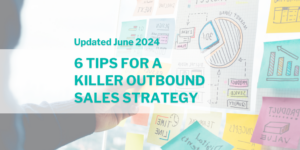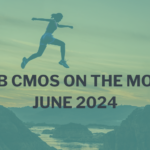
Updated June 2024: 6 Tips For A Killer Outbound Sales Strategy
Engaging in outbound sales means you can target the exact type of customer you want, rather than waiting for them to discover your brand, engage with your content, and request a consultation. Outbound sales techniques are powerful tools for business development, especially for small and growing companies. In our updated guide to new outbound sales strategies, the key components include building accurate prospecting contact lists, developing a strategic approach, and executing repeatable sales processes to reach decision-makers.
- 52% of outbound marketers say their marketing efforts are “ineffective.”
- 42% of sales reps feel they don’t have enough information before making a call.
- Only 16% of marketers say outbound practices provide the highest quality leads for sales. (HubSpot)
- 75% of surveyed executives are willing to make an appointment or attend an event based on a cold call or email alone. (DiscoverOrg)
To get the most success out of your outbound sales strategy, integrate these six tips into your process:
1) Segment by market
After identifying your ideal customer, the next step is to create targeted segments by market. You can split up your segments based on value, need, region, job title, or industry. This strategy allows your sales team to develop outreach that addresses the specific needs and preferences of each customer segment, improving overall rapport and increasing close rates. By segmenting your audiences, your organization can refine messaging, customize approaches, and over time, establish your sales team as thought leaders in the industry. Perfecting and differentiating your approach to specific segments will eventually lead to more revenue. The more segmented you are, the more personal you can be in your approach, ultimately leading to a more successful outbound sales strategy overall.
2) Measure success
How do you determine whether your sales strategy is effective? It comes down to developing KPIs (key performance indicators). Implementing a new strategy is useless if success isn’t measured month over month with proven improvements or declines. If you don’t have a baseline, think through the most relevant KPIs to your industry and business goals. Common KPIs used throughout the sales industry include:
- Conversion rates
- Number of qualified leads
- Sales cycle length
- Customer acquisition cost
Tracking metrics such as these will enable you and your sales team to gain visibility into how outbound sales activity is performing. By monitoring your success and optimizing your outbound sales strategy along the way, your business will maintain a healthy pipeline filled with future opportunities and continued growth.
3) Work active accounts, not just leads
Many organizations prefer account-based marketing, a strategy that targets groups of decision-makers rather than a single lead to build brand awareness and continuity. The theory is that if the right decision-makers are aware of your product, the company is more likely to close. The goal is to yield higher revenue from fewer clients. According to Yieldify, 75% of customers prefer personalized offers. Other top benefits of account-based marketing include:
- Clear ROI
- Personalization and optimization
- Easier sales alignment
- Reduced resource waste
- Clear tracking of goals and measurements
After determining which channels are best to optimize through this approach, you can begin to execute a targeted campaign. With the right technologies, sales teams can coordinate ABM campaigns more effectively and at a greater scale.
4) Combine inbound and outbound efforts
This one may seem obvious, but many companies don’t use inbound efforts to bolster their outbound sales strategies. Outbound and inbound marketing should feed off each other to avoid duplicating efforts and wasting time. Leverage the momentum created by the inbound team — take full advantage of blogs, webinars, eBooks, and other content your marketing team develops. Inbound efforts increase the likelihood of a prospect being truly interested and informed before even contacting the sales team. In the long term, this improves lead qualification and decreases the sales cycle.
5) Stop talking about yourself
Research suggests it takes as many as 12 touchpoints before engaging in a meaningful sales conversation. To remain productive and see results from your outbound sales strategy, you must make each touchpoint count. So, how do you stand out from the competition? Start by utilizing content created by your marketing team, such as case studies, white papers, and eBooks, and stop only talking about yourself. Instead of telling prospects about who you are and what you offer, provide content that shows you understand their pain points to invite a conversation. From there, you can demonstrate how your business can eliminate their problems.
6) Leverage technology and automation
In today’s fast-paced business environment, leveraging technology and automation is crucial to enhancing your outbound sales strategy. Implementing customer relationship management (CRM) systems, sales engagement platforms, and other sales automation tools can streamline your processes and ensure consistent follow-ups.
Sales automation tools can help your team manage contact lists, schedule emails, and track interactions without manual effort. Additionally, AI-driven analytics can provide insights into customer behavior and preferences, allowing for more precise targeting and personalization. Automated workflows can also ensure that no lead falls through the cracks, maintaining consistent communication throughout the sales funnel. By integrating technology and automation into your outbound sales strategy, your team can focus more on building relationships and closing deals rather than administrative tasks.
By incorporating these strategies, your outbound sales efforts in 2024 can become more efficient, targeted, and effective, leading to sustained business growth and increased revenue. Tools like Winmo report every time a company has a shift in its demographic, agency lineup, product offerings, and media mix, enabling your sales team to personalize their outreach and approach at precisely the right time.





